Huernia zebrina Live succulent plant Donuts like flowers
₹199.00
Out of stock
Email when stock available
Huernia zebrina Origin and Habitat: Zimbabwe, Mozambique, South Africa (Mpumalanga, KwaZulu-Natal), Swaziland.
Huernia zebrina Altitudes: It occurs at low altitudes.
Huernia zebrina Habitat: Open dry scrubland, in stony areas, often in calcrete or hard loamy soils.
Synonyms:
- Huernia zebrina N.E.Br.
ENGLISH: Little owl eyes, Owl eyes, Zebra-stripped Huernia, Carrion flower, Lifebuoy Huernia
CHINESE (中文): 斑马萝藦, 缟马
RUSSIAN (Русский): Гуерния полосатая, Гуэрния зебровая
Description: Huernia zebrina (a.k.a. Owl eyes) is a low-growing perennial succulent species more or less creeping, occasionally forming mats. It is one of the most beautifully flowering huernias and very popular in cultivation for its odd blooms. It has a raised, glossy, wine-red ring or ‘annulus’ around the mouth of the corolla tube. The corolla varies in size and is usually patterned with wine-red zebra stripes which vary conspicuously in colour intensity. One of the so-called “lifebuoy” huernias because of the glossy raised annulus.
Stems: Deflexed-decumbent or decumbent-erect, laxly branched, tapering, prominently 5-(to 6) angled, and irregularly branching, 5 cm long, 12 mm in diameter and strongly toothed. Teeth 4,5 mm long.
Inflorescence: Few-flowered on a 12-14 mm long peduncle.
Flowers: The corolla is flat (25-)35-45(-50) mm across with a tube c. 6 mm in diameter and c. 7 mm deep, the prominent shiny annulus is glossy red to purple-brown, marked or unmarked, the 5 corolla lobes are acuminate c. 12 x 10 mm, greenish-yellow with red to purple cross-zebra-stripes; both sides glabrous. As with other plants of the genus, H. zebrinahas a small intermediate lobe. Sepals 6-8 mm. Corona with inner lobes 2-4 mm tall, claw-like, incurved. Frequently the flowers are larger than the plant itself and emit the smell of carrion. The rotting flesh odour attracts flies who transfer the pollen as they search from flower to flower for the non-existent rotting meat.
Be the first to review “Huernia zebrina Live succulent plant Donuts like flowers” Cancel reply
You must be logged in to post a review.

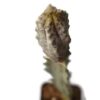
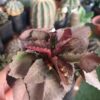
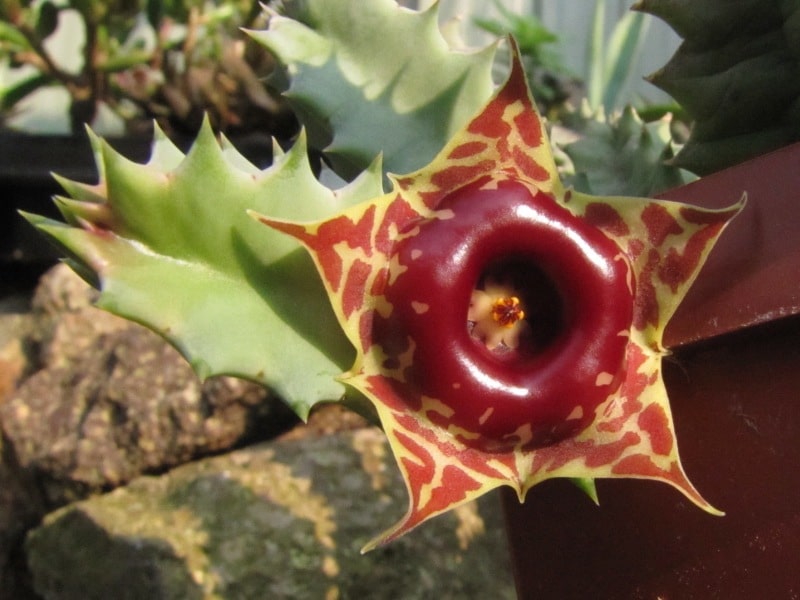
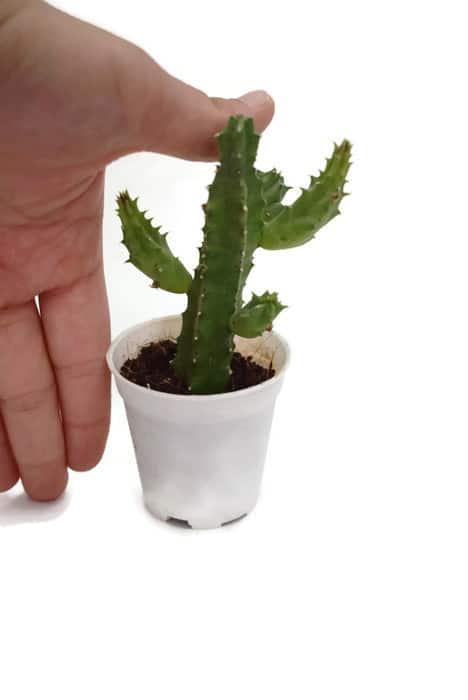
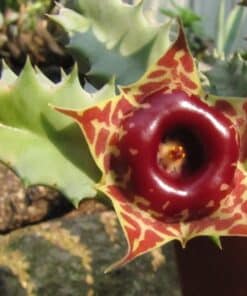

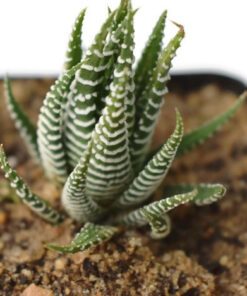
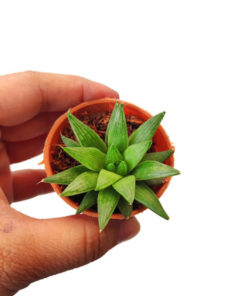

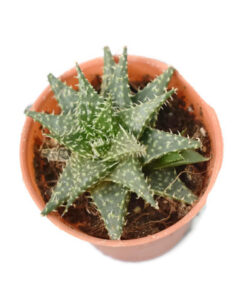


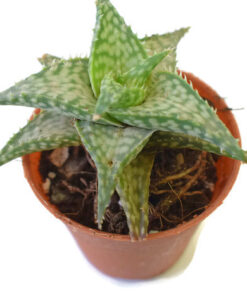
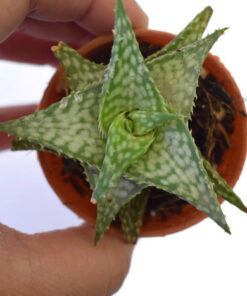
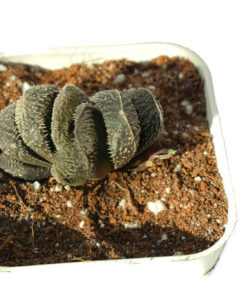

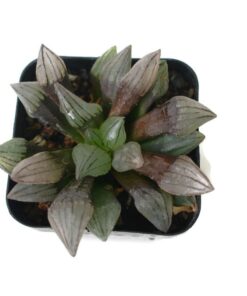


Reviews
There are no reviews yet.